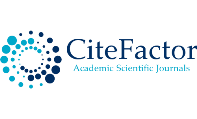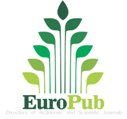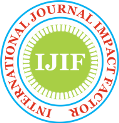Establishment of a mode casei wall extract in mice with effect of human umbilical cord mesenchymal stem cells coronary artery injury and pathological and ultrasound changes
Abstract
Objective: To investigate the establishment of a model of Kawasaki disease mouse coronary artery injury caused by Lactobacillus Casei Wall Extract (LCWE) and the effect of human umbilical cord mesenchymal stem cells (hUC-MSCs) on coronary artery injury and pathological and ultrasound changes.
Methods: Sixty BALB/c mice were randomly assigned to 3 groups, each with 20 mice. The control group was given phosphate-buffered saline (PBS) intraperitoneally for 2 consecutive days; the model group and the stem cell group were immunized with the prepared LCWE for 2 consecutive days. From the 16th day of the immunological model, the control group and model group were injected with 300 μL PBS daily; the stem cell group was injected with 300 μL (105/mL) of human umbilical cord mesenchymal stem cells daily for 10 consecutive days. The mice were killed in batches on the 4th, 15th, 26th, and 32nd day of immunization, and the morphological changes of the coronary arteries of the mice were observed by echocardiography and histopathology.
Results: LCWE can induce coronary artery damage similar to Kawasaki disease in mice. B-ultrasound showed that 57.5% (23/40) mice had coronary artery disease, of which 5% (2/40) had a right coronary artery aneurysm and 27.5% (11/40). Thickening of the coronary artery wall, widening of the inner diameter of the left coronary artery trunk, and thickening of the intima; histopathology showed mild swelling of the epicardium of the aortic valve, mitral valve, right ventricle and atrium, and a few neutral granulocytes were scattered and infiltrated, the coronary artery lumen within it was dilated and a small amount of myocardial cells died and collapsed, and the local fibrous connective tissue was significantly proliferated and accompanied by solid calcium salt deposition. After hUC-MSCs intervention treatment, the ultrasound showed that the inner diameter of the main coronary artery was reduced. Histopathology showed that there was a large amount of lymphocytes, eosinophils, and monocytes in the outer membrane of the left atrial appendage of the mouse. There was no obvious vasculitis and other infiltrations; obviously abnormal.
Conclusion: 1. Lactobacillus Casei Wall Extract (LCWE) can induce coronary arteritis in an animal model of Kawasaki Disease (KD).
2. Human umbilical cord mesenchymal stem cells have a therapeutic effect on coronary artery disease in animal models of Kawasaki disease.
Downloads
Copyright (c) 2020 Author

This work is licensed under a Creative Commons Attribution 4.0 International License.
The Authors retain copyright (full ownership) to their content published in the Journal. We claim no intellectual property rights over the material provided by any User in this Journal. However, by setting pages to be viewed publicly (Open Access), the User agrees to allow others to view and download the relevant content. In addition, Open Access articles might be used by the Provider, or any other third party, for data mining purposes.
The Provider reserves the rights in its sole discretion to refuse or remove any content that is available via the Website.



















